As a German Shepherd owner, I’m always fascinated when my dog chases after the local deer in nearby woods. I suppose it’s her prey drive kicking in. I usually get her on the leash beforehand, but sometimes the deer appear from nowhere, and off she goes, only to return moments later as they have way outran her. That got me wondering, if properly trained, can German Shepherds track deer?
German Shepherds can track deer as they are highly trainable and have a strong sense of smell, which makes them capable of tracking deer scent and following deer trails. Although not commonly used as hunting dogs, German Shepherds possess many skills that make them effective tracking dogs.
If you’re a hunting enthusiast and dog owner, you may wonder if your German Shepherd can locate and track deer, a skill that has been used for centuries. Or you may be considering getting a German Shepherd specifically to track deer.
In this article, we will explore the abilities of German Shepherds when it comes to tracking deer and the training required to develop this skill. Training includes:
- How to create hoof marks in your backyard
- How to make a parallel trail of blood
- Tips for hiding a decoy deer to wherever the trail leads
- How to get your dog to track the scent of blood
Let’s get started!
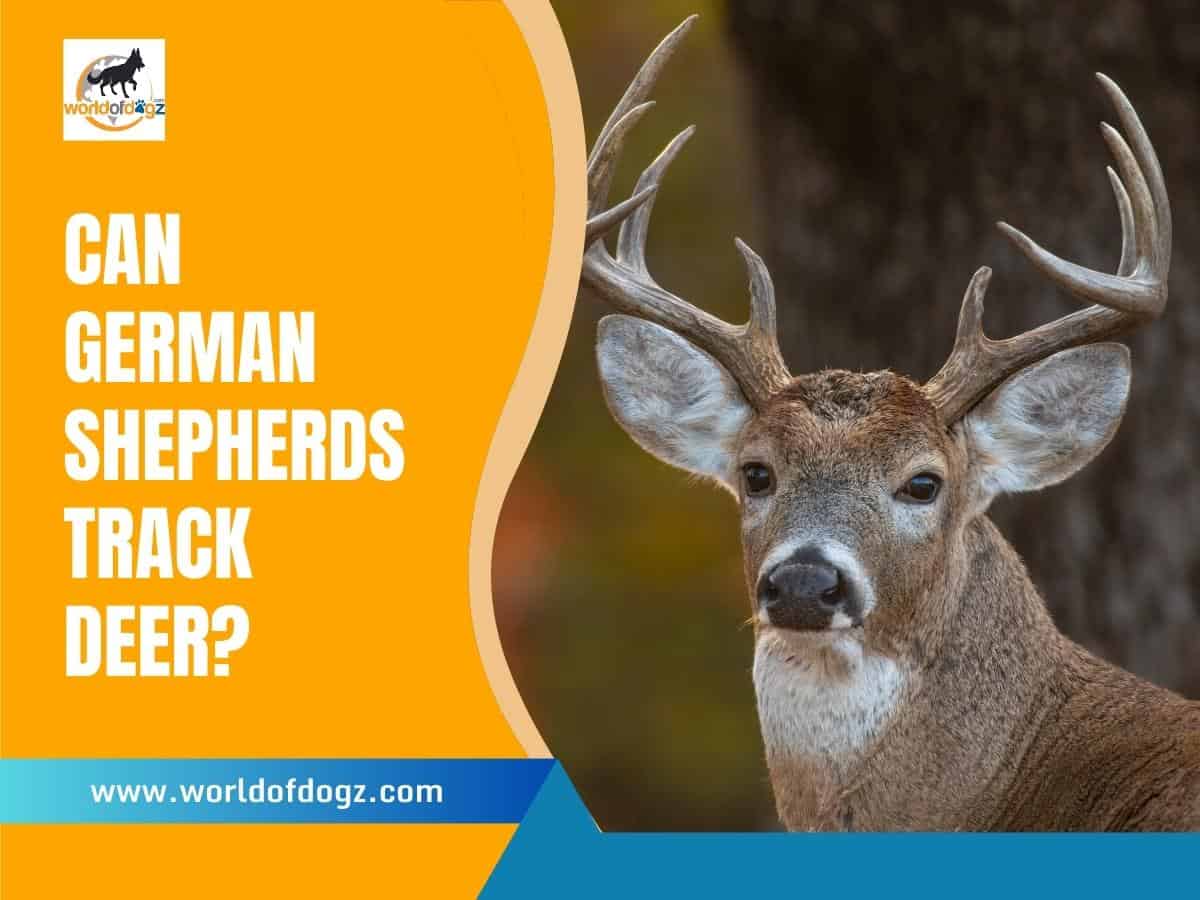
Are German Shepherds Good Tracking Dogs?
German Shepherds are considered good tracking dogs due to their high loyalty, alertness, curiosity, courage, and confidence. These traits, coupled with their high level of trainability, make them excellent police and search and rescue dogs.
Additionally, their sense of smell is highly developed, which makes them able to identify drugs, bombs, and other scents.
Can German Shepherds Track Deer?
Since German Shepherds can sniff things at a distance, they’re often trained to find and retrieve small objects like toys and even lost household items. However, this doesn’t mean they can’t track in settings other than showing off party tricks!
German Shepherds can track deer if they’ve been trained well in both scent-based and tracks-based seeking. Although they’re naturally good at working with other animals, while they are not typically used as hunting dogs, many skills that enable them to excel as working dogs also allow them to track deer.
That said, you must give your dog the primary scent-based seeking education. After that, you must simultaneously introduce tracks, a blood trail, and a decoy deer. Of course, you will not hide the deer while the dog is watching you, as this sets up the wrong expectations compared to the actual scenario!
How to Train a German Shepherd to Track Deer
If you want your German Shepherd to be your specialized hunting partner, you must train him to track hoof marks, blood trails, and deer scent to help find an injured deer.
Since this task is a lot more complex than tracking toys around the house, you must develop a seeking circuit that employs all of your dog’s senses.
To train your German Shepherd to track deer, hide a decoy deer, and create hoof-steps and a trail of blood leading up to the hidden dummy. Commanding your dog to “find it” after he sniffs some blood will help him get accustomed to the real thing and help you evaluate if he has a strong foundation in scent-based tracking.
Let’s explore these steps in more detail.
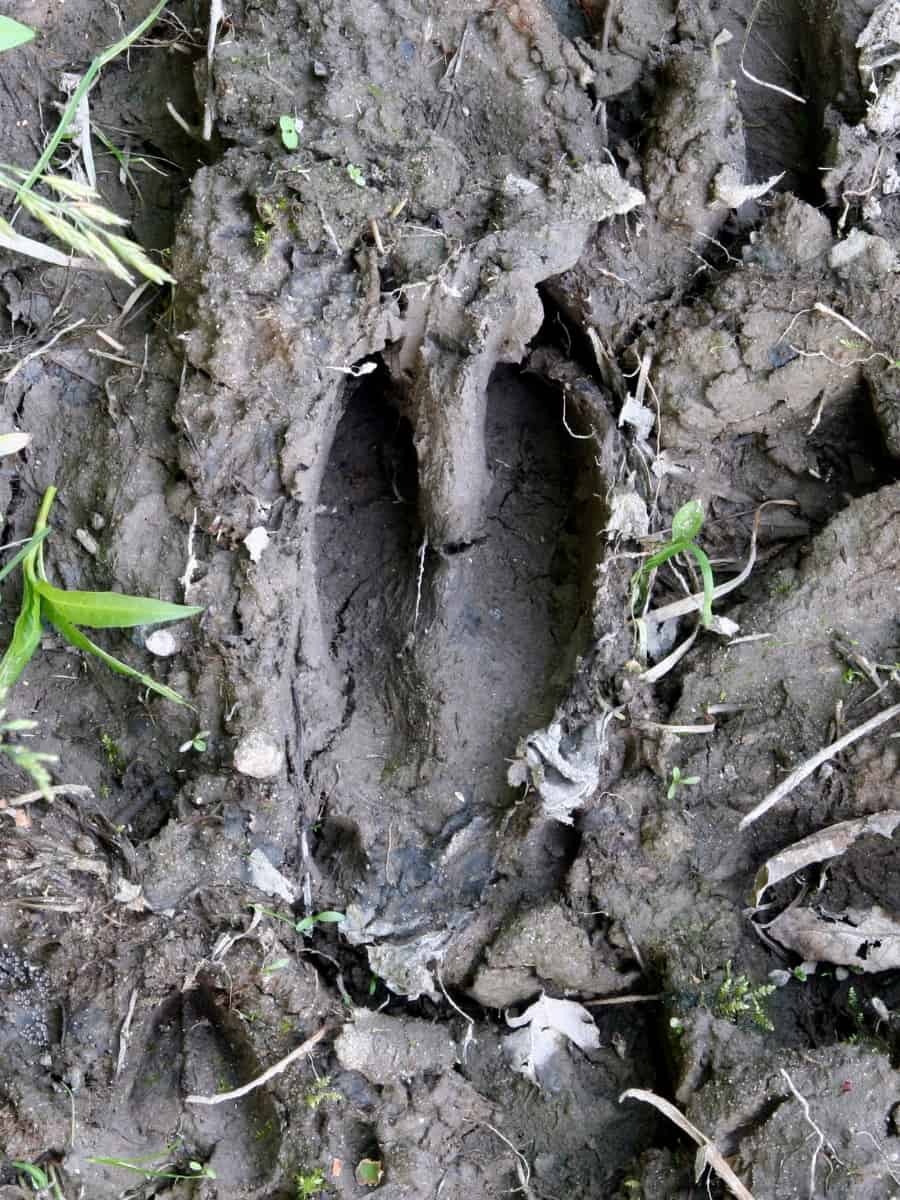
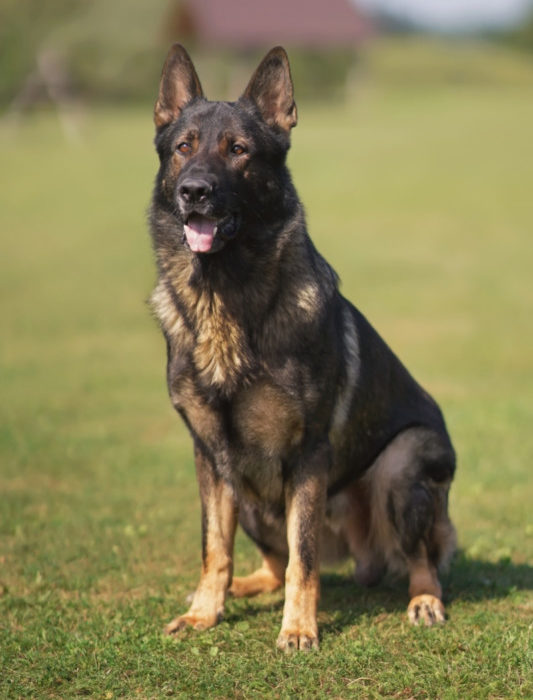
Create Hoof Marks
This is one of the most critical steps in training your German Shepherd to track deer, as it grounds the drill in realism.
If the hoof marks don’t match a deer’s hoof, your dog might get confused in a real-life scenario. That’s why you should avoid fake deer hooves and buy a real deer leg for this part. Don’t worry, though, as most hooves sold on the market are cut really short.
Tying a hoof to a walking stick will help speed up the trail-creation process. Once you have your deer stick, poke the ground just enough to make a visible mark. Make two to four hoof marks at every spot. You should mimic the marks a deer would leave as he runs away.
Create a Blood Trail
This step requires real blood. It is one thing that combines your German Shepherd’s scent-tracking and vision-tracking like nothing else. Using fake blood will not accomplish this. While you can use almost any animal’s blood, using deer blood from one of your previous hunts is the best option.
You can dilute the blood so it is easier to wipe off, and your dog learns to pick up a fainter scent. A good idea is to have a bottle of deer blood with holes in the cap and sprinkle it as you make hoof marks so you don’t have to make two rounds. Any plastic bottle with a lid you can pierce with a pen or a razor is good enough for this.
You can safely conduct this training on your land. If you live in an apartment and want to train your German Shepherd to track deer, you’ll need to take him to the hunt’s location and do the exercises there.
Using astroturf and fake leaves to conduct the activities indoors isn’t feasible, and it’s unlikely that such training works when the environment shifts drastically.
Hide the Decoy at the End of the Trail
Using a deer decoy has two benefits: first, you can use the same bait for hunting deer, and second, your German Shepherd can develop a connection between what he’s doing and why he is doing it.
This visual association will greatly help when the target is far away, as is deer hunting. By seeing the deer at a distance, he’s already primed to seek.
This step is pretty straightforward; all you have to do is hide the decoy in a place where some of it is visible. Unlike finding toys and small household items, this training involves seeking the general region where the target is.
The only thing you should consider is whether you want to show the decoy first and then hide it or start by having your dog smell blood and follow the trail. If your German Shepherd has a strong foundation in finding objects based on scent, you can start with the blood-on-rag method.
If he doesn’t, you will have a better time taking a month or two to train him in just that, using the steps earlier. I believe that is a lot more practical than having your dog sniff a decoy and then running to find it. Good luck getting your German Shepherd to stay put as you excitedly run away from him!
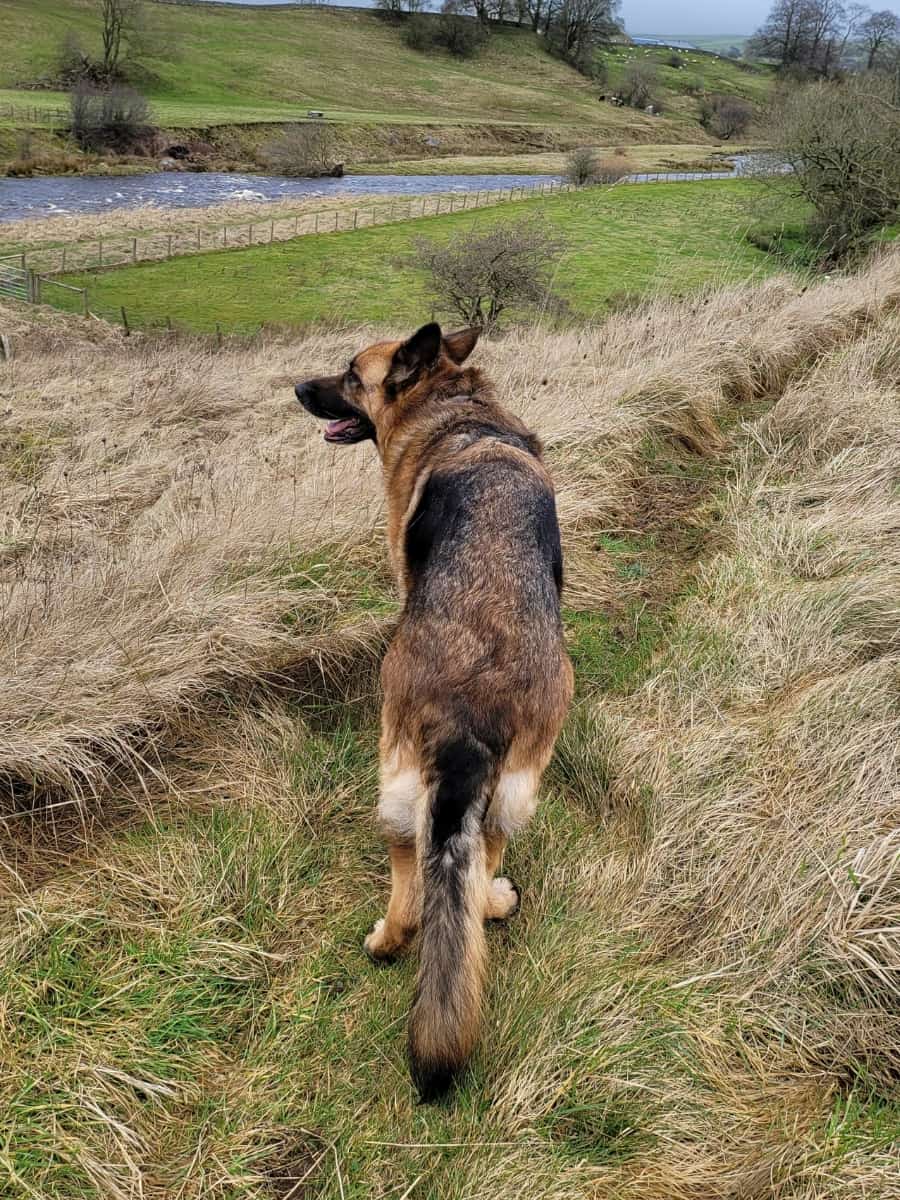
The Three Stages of Tracking Education
Congratulations! You have just learned the three stages of training your German Shepherd to track deer. That said, you should know that different dogs require an extra level of hand-holding throughout the process.
The three stages below assume your dog requires a lot of help before internalizing instructions and detecting patterns.
Stage One: Natural Curiosity Anchor
Some people might struggle to communicate the instructions via the trail alone. If you’re patient, you can let your dog’s natural curiosity drive him toward the decoy.
You simply have to take your dog on a walk around the area you have dusted with hoof marks. German Shepherds can get curious and might start following the steps and blood on their own.
If they don’t, walk in the same direction, and your dog will follow. This is where you can anchor the “TRACK” command. As soon as you notice your dog sniffing blood and following with his nose to the ground, simply say the cue “TRACK.”
After a few repetitions, your German Shepherd will associate the word with the specific combination of stimuli, and you’ll be ready to add distractions to improve his real-life deer-tracking acumen.
Of course, each success should be rewarded with treats, cuddles, and an appreciative tone, as this incentivizes your dog to learn.

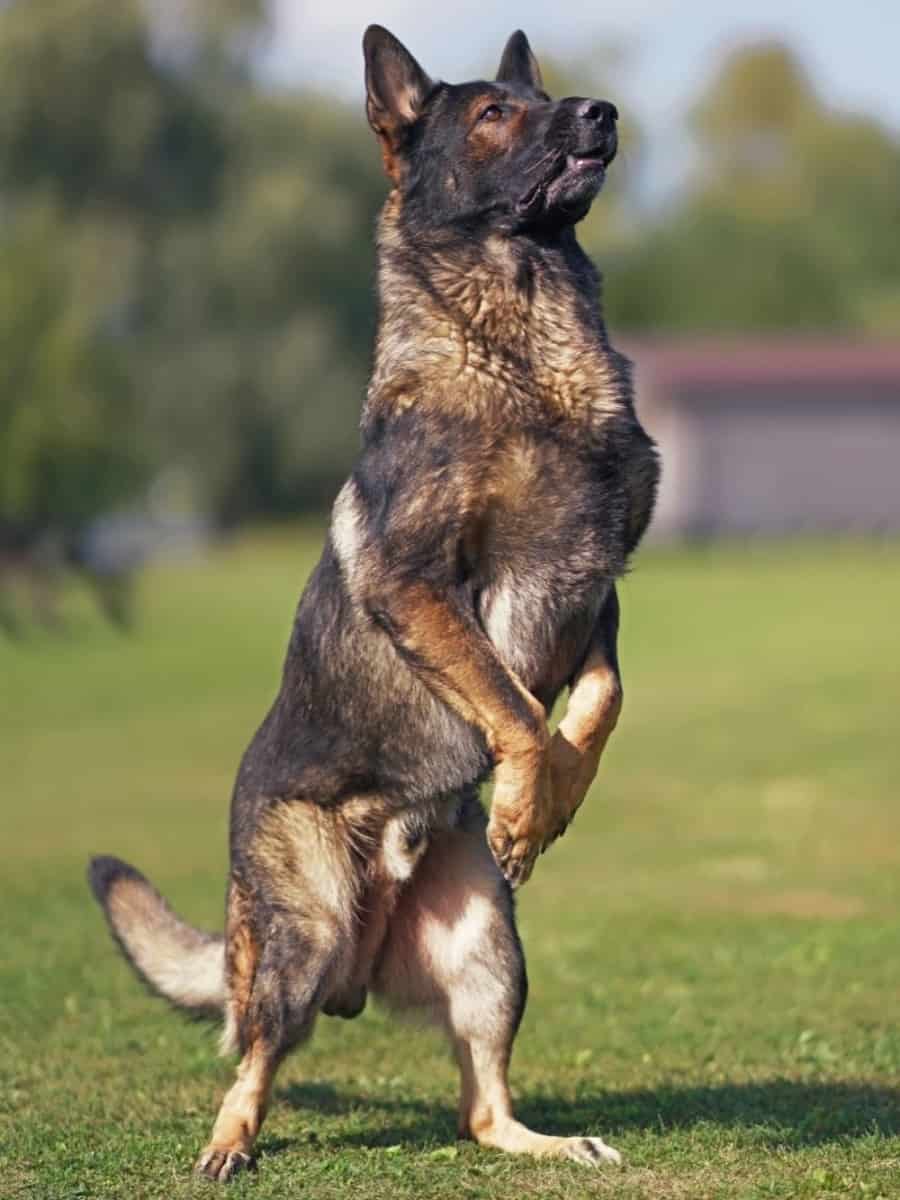
Stage Two: Ramp up the Difficulty
Most German Shepherds will immediately qualify for this stage if they have a foundation in simple scent-seeking. If your dog can track the decoy five times in a row without getting confused, you should proceed to the next level.
Here, your main aim should be to help him succeed without making him realize he is doing a more challenging job. Most DIY trainers make the mistake of ramping up the difficulty level too quickly.
Consider how your dog can differentiate between two commands with the same number of syllables. This is a testament to the German Shepherd breed and their intelligence. And since he can develop response circuits to such fine detail, changing too many factors in his training will make him approach the next level as a different drill.
Playing fetch and getting your German Shepherd to find a hidden toy follows the same series of activities for most of the circuit, yet your dog compartmentalizes the commands differently.
You don’t want your dog to take the entire tracking education up to this point and categorize it while he figures out what to do with the “new” task.
Here are some handy ways to introduce distractions without introducing a new “education” circuit:
- Spend at least one week running the same circuit till the distraction/difficulty you introduced is normalized.
- Start with the easiest distraction and move up. Always set up your dog for success.
- Keep everything else constant while changing a specific factor.
Stage Three: Live Drill
Once your German Shepherd is confident in his tracking skills, and you notice yourself hand-holding less often, you can take him for the real thing.
Reading this post may make you think it’ll take a long time, but most German Shepherds can be tracking-ready in a few weeks. The only thing you have to manage at this point is your expectations!
At least the first time you take your dog to track deer, it has to be about him. Do not expect everything to go perfectly! Expect him to get distracted or lose the trail. Managing your expectations will help you be patient and give your German Shepherd the real-world experience he needs.
Disadvantages of Using German Shepherds as a Deer Hunter
While German Shepherds greatly aid hobbyist hunters, they aren’t conventional hunting dogs. That’s why their use in hunting comes with its own set of limitations. Here are some of the drawbacks of using German Shepherds as hunting companions.
Not Suitable for Chasing Live Prey
While they can track the game once you hit a delayed-effect shot – if the animal does not die from your shot, you can’t expect your German Shepherd to finish the job for you (at least not without mutilating the target).
If you want to get serious about hunting and want your dog to chase and hold injured prey for you, you should look for traditional hunting breeds such as a Bloodhound.
Not Good With Large Targets
Your German Shepherd will be more open to learning how to retrieve ducks, birds, and animals the size of rabbits, if not smaller. This can limit your ability to hunt larger animals.
With deer, you must be able to deliver a fatal shot the first time you shoot. And if you do not have a customized turret and a scope, it is almost impossible to hunt a deer with a German Shepherd.
The first shot is rarely fatal, and without firing two rounds, you can only get your game by having a hunting dog who can chase and hold the target.
Final Thoughts
German Shepherds have a strong sense of smell and a natural instinct to track prey, which makes them well-suited for deer tracking. However, their ability to track deer may vary depending on their individual training and experience.
If you want to maximize their tracking potential, you might want to consider taking your German Shepherd to specialized training in scent detection and tracking, where they can be exposed to different hunting environments. Ultimately, with the right training and guidance, your German Shepherds can be an effective deer tracker and valuable hunting companion.
Related Posts You May Like:





